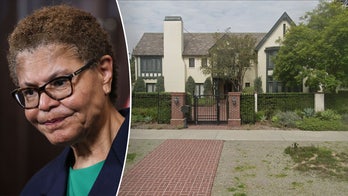Vallejo, Calif., does not look like a city on the rise. About half of its downtown retail space is empty. The list of foreclosed properties continues to grow, prompting auctions every day on the steps of City Hall.
And yet, this city of 118,000 northeast of San Francisco believes that after hitting rock bottom in 2008 it is now recovering from three years in bankruptcy.
“Nobody wants to be from a city that’s a bankrupt city,” Vallejo Mayor Osby Davis said. “And when we emerged from bankruptcy it was like we were having a party. Now we’re moving ahead.”
Moving ahead slowly.
Vallejo officially came out of bankruptcy in November 2011. The result has been a smaller city government with a noticeable shortage of services and police protection.
“We don’t meet all the needs of the city today,” City Manager Daniel Keen said. “We have stretched the limits of small police force.”
The police department is down from 138 to 93 officers partly because the police union refused to take a cut in pay or benefits. The other three public employee bargaining units have agreed to concessions, mainly in their pension plans and health care benefits. Police officers, meantime, still enjoy free health care coverage for life and the ability to retire at age 50 with 90 percent of their last year’s pay.
Vallejo City Council member Stephanie Gomes says the unions were able to negotiate those gold-plated packages because they essentially owned the city leaders, whom they helped get elected.
“When I first ran, I was in an interview with all the unions and the question they asked me was, ‘If we endorse you will you stay bought?’” Gomes said.
Gomes never did get that endorsement and has been a critic of the unions and their contracts ever since. She said bankruptcy has been good in that it lays the city’s finances open so everyone can see the sacrifices that need to be made.
Vallejo’s fiscal crises has been a long time in the making. The Navy closed its Mare Island Shipyard in 1996, draining millions of federal dollars out of the economy. The city managed to get by thanks to rising property values. When real estate values started to tank, Vallejo’s tax base was hit hard.
City government has shrunk 25 percent. Two fire stations were closed. Streets have not received any maintenance in five years. The police force is so small the city installed cameras to monitor areas cops could not adequately patrol. The cameras are monitored back at police headquarters by unpaid volunteers.
One of the biggest changes in Vallejo post-bankruptcy is residents expect less from their government and many are willing to do more to fill the void. The playground at City Park is a good example. With the city broke and cutting back on all services, 2,000 residents bought the material and built a sprawling play structure.
Volunteers also clean alleys, parks and remove graffiti. They report city code violations. And they patrol their own streets. The number of neighborhood watch groups has grown from three to well over 300.
Kathy Beistel started a watch group called the Kentucky Street Watch Owls.
“Bankruptcy wakes people up,” Beistel said. “You can’t just sit back, you need to take care of yourself. Just don’t expect everybody else to do it for you.”
Beistel’s street no longer is infested with prostitutes and drug deals. But across town, business owner Manny Melenbrez is not as optimistic.
“I haven’t seen a drastic change at all yet,” Melenbrez, who owns Momo’s Cafe, said. “People think negative about the city. They don’t want to visit because they think the crime rate is high.”
While bankruptcy wiped away $32 million in debt, defaulting on its bond payments will make it very difficult for Vallejo to borrow money in the future. Voters helped last November by narrowly approving a 1 percent increase to the sales tax, which will generate $10 million a year.
But the legal bills alone from bankruptcy are $16 million. The bankruptcy court proceedings may be over, but the lingering effects will drag on for years.
“I think Vallejo’s story is a lot like other cities in California,” Daniel Keen said. “It’s a story of excess. We are trying to rebuild confidence in this city.”




